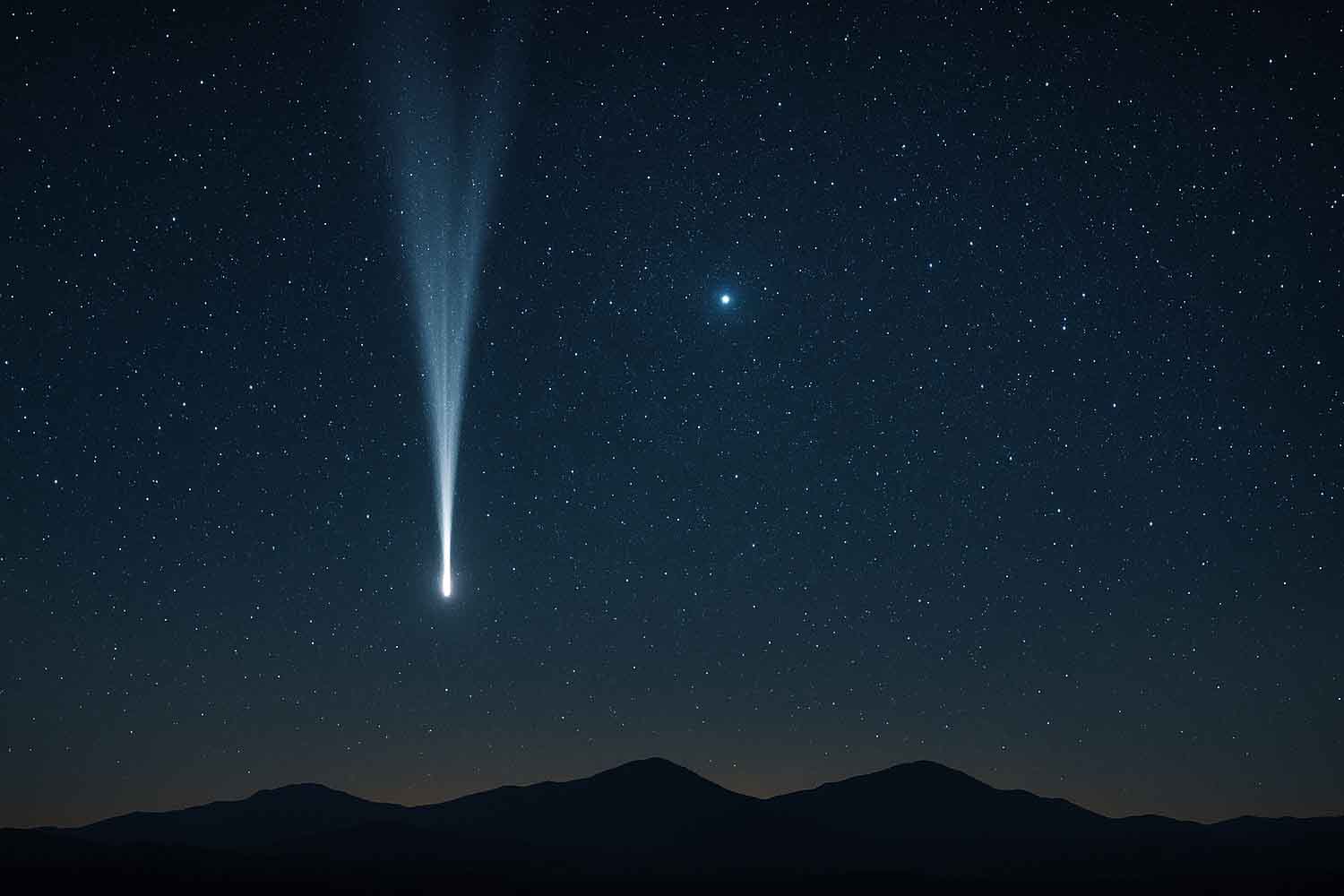Ukrainian astronomer Gennadiy Borisov has discovered a rare, possibly interstellar comet, C/2025 J1, with an extreme orbit that defies conventional trajectories.

In the vast realm of astronomy, it’s rare for a discovery to genuinely surprise even the most seasoned scientists. But when Gennadiy Borisov is behind the telescope, you know something extraordinary might be brewing. The Ukrainian amateur astronomer—famous for identifying the first confirmed interstellar comet, 2I/Borisov, back in 2019—has done it again. In May 2025, he spotted a new celestial object that has left experts reeling: C/2025 J1 (Borisov).
This newly detected comet, observed between May 2 and 3 from Borisov’s private observatory in Crimea, is stirring up excitement not just for what it is, but for what it might be. Some astronomers are already calling it “quasi-interstellar,” a term rarely thrown around lightly.
What makes this comet so unusual?
Unlike most comets that follow relatively flat, looping paths around the Sun, C/2025 J1 slices through the Solar System almost vertically. According to official data from NASA’s Jet Propulsion Laboratory, the comet’s orbit is tilted about 95.4° relative to the solar plane. That’s not just tilted—that’s perpendicular. One astronomer described it as “a gatecrasher at a well-organized party,” and the metaphor fits.
Even more striking is the comet’s orbital eccentricity—a measure of how stretched or hyperbolic an orbit is. C/2025 J1 has an eccentricity of 1.00069617, just enough to classify it as having an open orbit. In practical terms, that means the comet might not be coming back. It could be on a one-way trip, either escaping from or arriving into our system, with no return planned.
It’s not confirmed whether it originated from another star system, like its predecessor 2I/Borisov, but the numbers suggest we can’t rule that out either. The evidence is, quite literally, up in the air.
A distant approach to the sun
The comet’s closest approach to the Sun, known as perihelion, is scheduled for June 11, 2026. But don’t expect a bright spectacle across the night sky. Unlike more famous comets that blaze near our star, this one will stay well out in the cold—over 332 million miles away (that’s 535 million kilometers, farther than the orbit of Mars).
Its brightness will be modest at best. Current estimates place its peak magnitude between 17.2 and 17.7, making it invisible to the naked eye but potentially observable with mid to large-aperture telescopes. Still, for the dedicated skywatcher, this could be a once-in-a-lifetime opportunity.
If you’re in the Northern Hemisphere and own a telescope, you’ll have until August 2026 to try spotting it, particularly near Polaris, the North Star—an astronomically convenient landmark. After that, the comet will shift toward the Southern Hemisphere, where it will remain visible through part of 2027.
This extended window of visibility is unusual for comets, which typically shine briefly and then vanish into the void. Astronomers are eager to take advantage of the opportunity, planning months of observation to analyze the comet’s behavior, chemical composition, and evolving tail.
A sealed message from deep space
Comets have long been dubbed “messengers of the primordial Solar System”—frozen archives of ancient material that predate the planets themselves. They are time capsules hurtling through space, and every new one offers clues to our own origins.
In the case of C/2025 J1, the object’s odd orbit raises fascinating possibilities. It may be a relic from the distant Oort Cloud, nudged into the inner Solar System by gravitational tugs from passing stars or galactic tides. Or perhaps it was formed in a region of our system so remote that it’s never been explored before.
Whatever its origin, this is no ordinary rock. It’s a celestial letter, sealed for eons and now drifting into view—ready to be read by those who know how to listen. And just as our probes scan the dusty plains of Mars or scan distant exoplanets for signs of life, comets like this one remind us that the cosmos still hides mysteries close to home. Sometimes, it’s the unexpected that pushes science forward.
Source: NASA JPL
